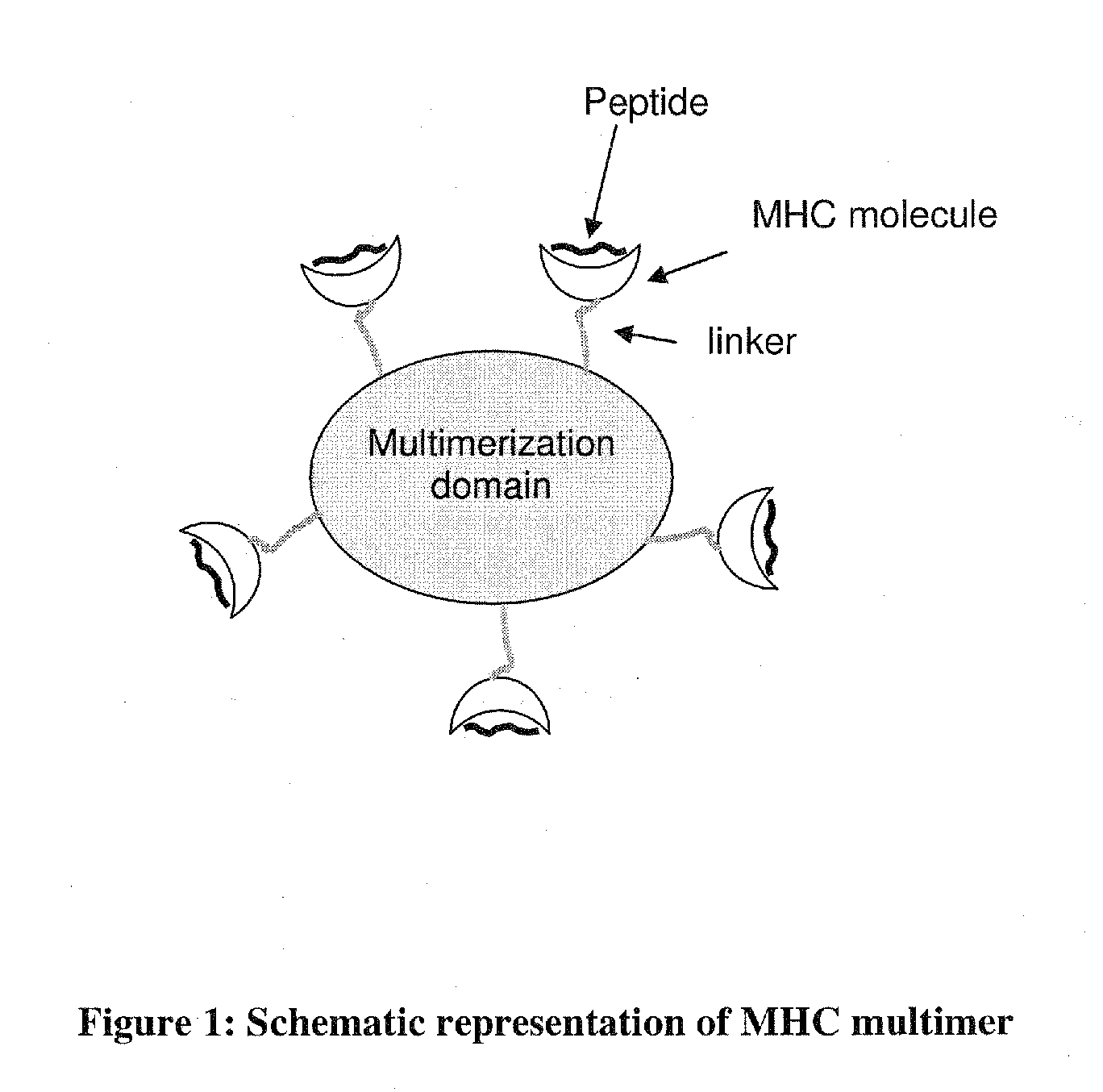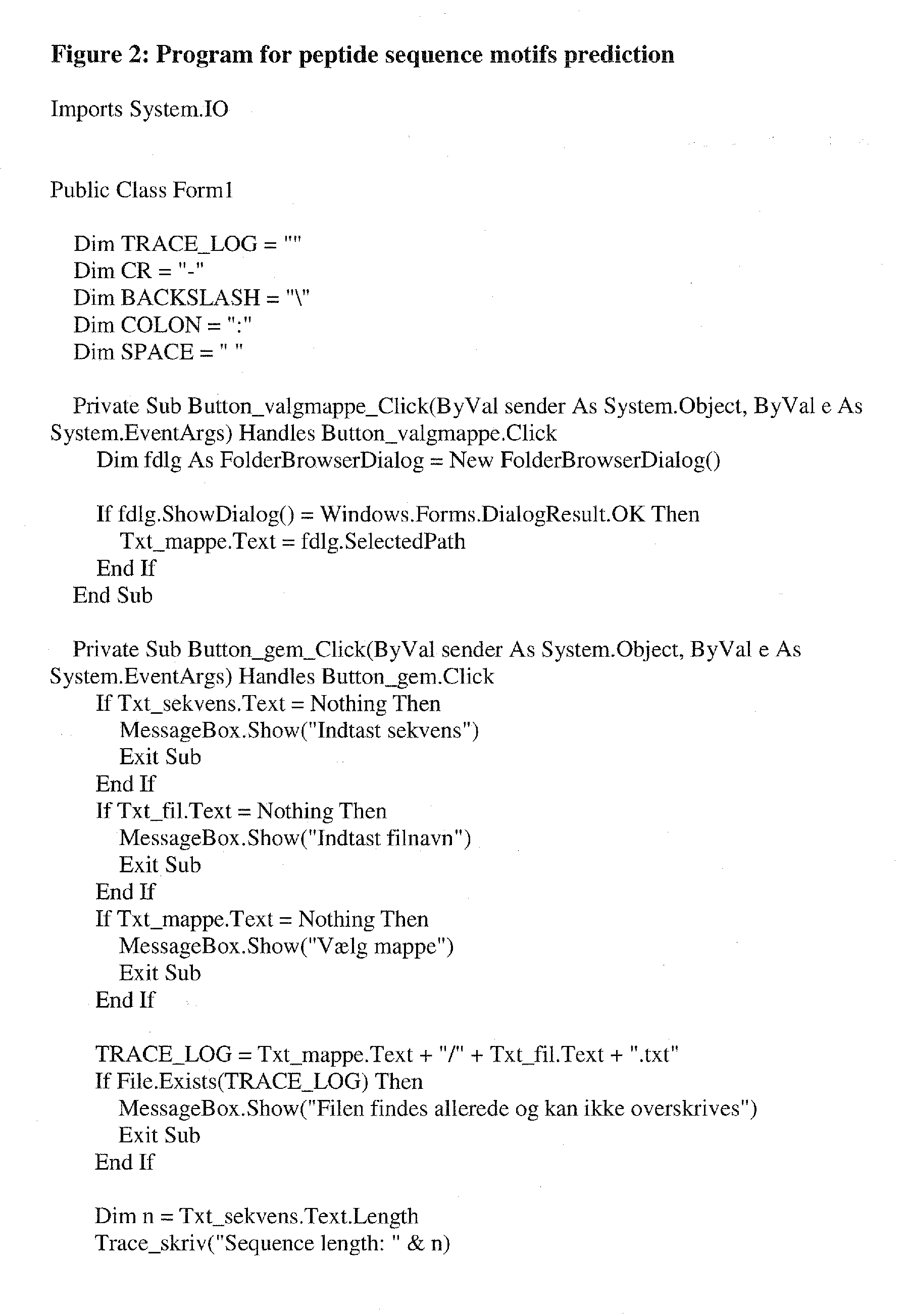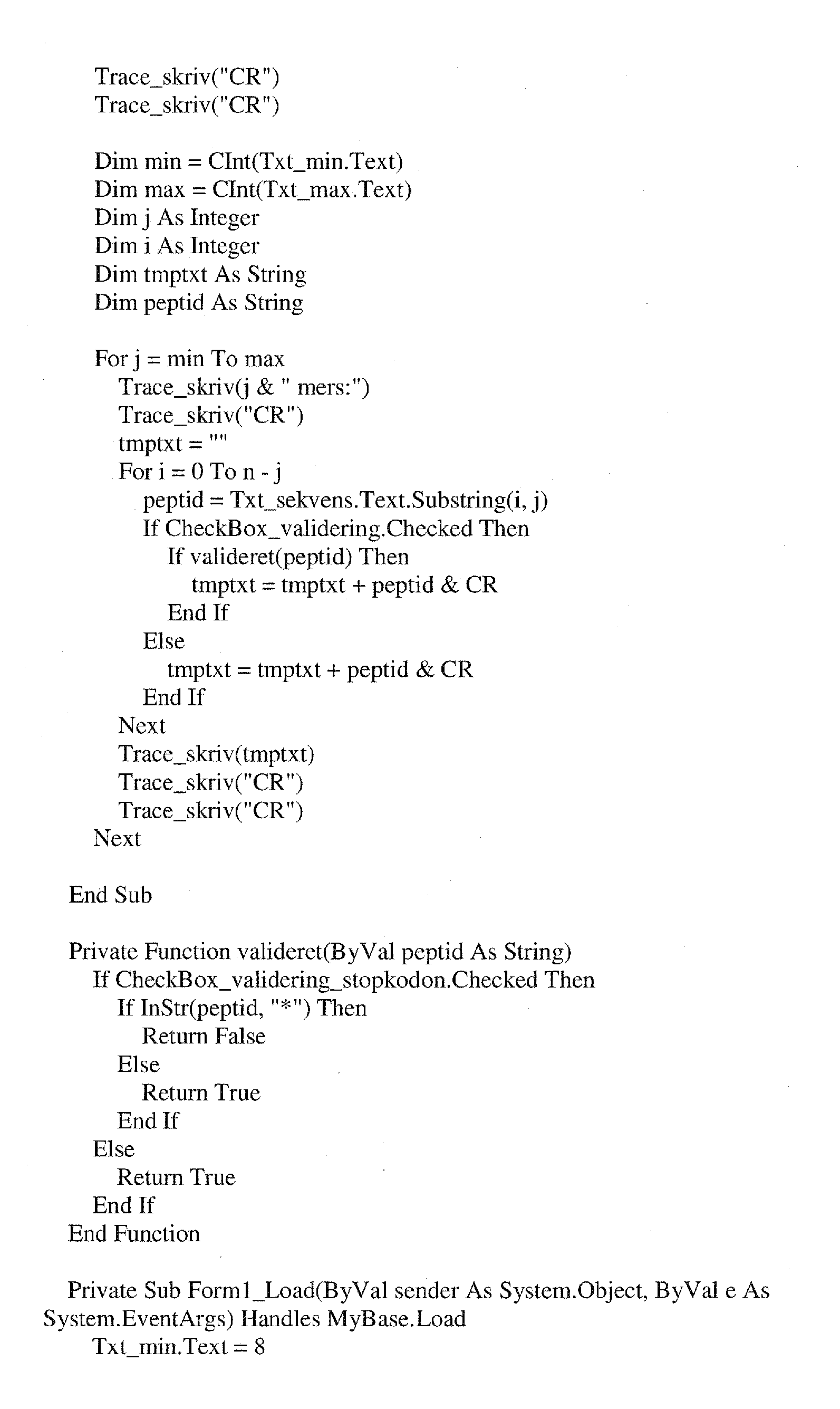MHC Multimers in Cancer Vaccines and Immune Monitoring
a cancer vaccine and multi-mer technology, applied in the field of mhcpeptide complexes, can solve the problems of difficult labeling specific, damage to self-tissue, and difficulty in employing such monomers of mhc-peptides for therapeutic and vaccine purposes, and achieve the effect of reducing the infectious titer
- Summary
- Abstract
- Description
- Claims
- Application Information
AI Technical Summary
Benefits of technology
Problems solved by technology
Method used
Image
Examples
example 1
[1955]This example describes how to make a MHC class I complex with a peptide in the peptide binding-groove using in vitro refolding. The MHC-complex in this example consisted of light chain β2m, the MHC class I Heavy Chain allele HLA-A*0201 (a truncated version in which the intracellular and transmembrane domains have been deleted) and the peptide QLFEELQEL (SEQ ID NO 110876).
[1956]MHC I-complexes consists of 3 components; Light Chain (β2m), Heavy Chain and a peptide of typically 8-10 amino acids. In this example MHC-complexes was generated by in vitro refolding of heavy chain, β2m and peptide in a buffer containing reduced and oxidized glutathione. By incubation in this buffer a non-covalent complex between Heavy Chain, β2m and peptide was formed. Heavy chain and β2m was expressed as inclusion bodies in E. coli prior to in vitro refolding following standard procedures as described in Garboczi et al., (1996), Nature 384, 134-141. Following refolding the MHC complexes was biotinylat...
example 2
[1975]This example describes how to generate soluble biotinylated MHC II complexes using a baculovirus expression system, where the MHC II complex was DR4 consisting of the α-chain DRA1*0101 and the β-chain DRB1*0401 as described by Svendsen et al., (2004), J. Immunol. 173(11):7037-45. Briefly, The hydrophobic transmembrane regions of the DRα and DRβ chains of DR4 were replaced by leucine zipper dimerization domains from the transcription factors Fos and Jun to promote DR α / β assembly. This was done by ligating cytoplasmic cDNA sequences of DRA1*0101 and DRB1*0401 to fos- and jun-encoding sequences. A birA site GLNDIFEAQKIEWH (SEQ ID NO 110889) was added to the 3′ end of the DRA1*0101-fos template. Covalently bound peptide AGFKGEQGPKGEP (SEQ ID NO 110890) derived from collagen II amino acid 261-273 were genetically attached by a flexible linker peptide to the N terminus of the DRβ-chain. Finally, the modified DRA1*0101 and DRB1*0401 inserts were cloned into the expression vector pAc...
example 3
[1976]This example describes how to generate empty biotinylated MHC II complexes using a baculovirus expression system, where the MHC II complex consist of any α-chain and any β-chain, including truncated and otherwise modified versions of the two. Briefly, The hydrophobic transmembrane regions of the DRα and DRβ chains of MHC II are replaced by leucine zipper dimerization domains from the transcription factors Fos and Jun to promote DR α / β assembly. This is done by ligating cytoplasmic cDNA sequences of DRα and DRβ to fos- and jun-encoding sequences. A birA site GLNDIFEAQKIEWH (SEQ ID NO 110889) is added to the 3′ end of either the DRα-fos / DRα-jun or the DRβ-jun / DRβ-fos template. The modified DRα and DRβ inserts is cloned into the expression vector pAcAb3 and cotransfected with linearized baculovirus DNA into Sf9 insect cells, according to the manufacturer's instructions. Following rounds of plaque purification, clonal virus isolates is further amplified before preparation of high-...
PUM
 Login to View More
Login to View More Abstract
Description
Claims
Application Information
 Login to View More
Login to View More - R&D
- Intellectual Property
- Life Sciences
- Materials
- Tech Scout
- Unparalleled Data Quality
- Higher Quality Content
- 60% Fewer Hallucinations
Browse by: Latest US Patents, China's latest patents, Technical Efficacy Thesaurus, Application Domain, Technology Topic, Popular Technical Reports.
© 2025 PatSnap. All rights reserved.Legal|Privacy policy|Modern Slavery Act Transparency Statement|Sitemap|About US| Contact US: help@patsnap.com



